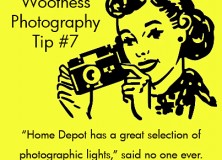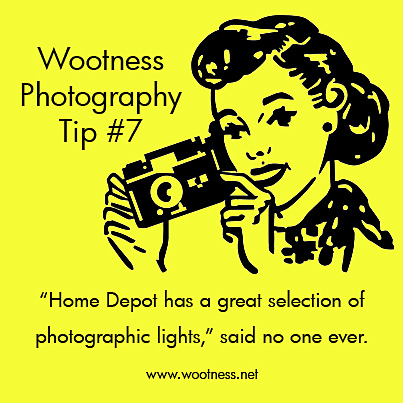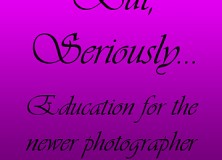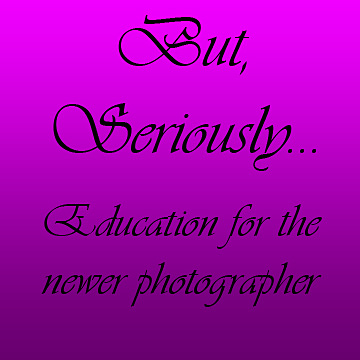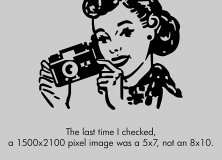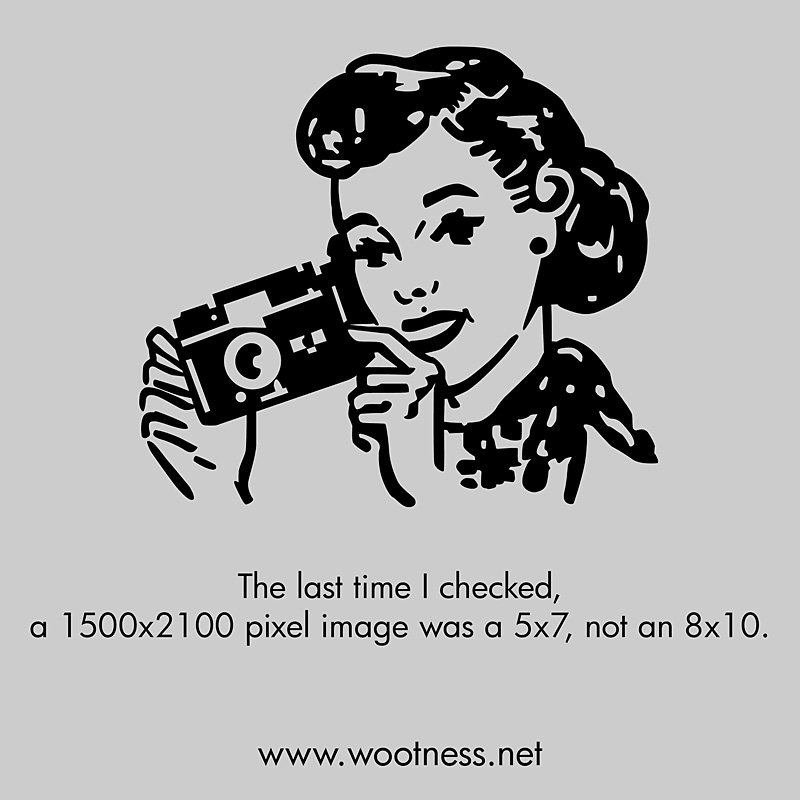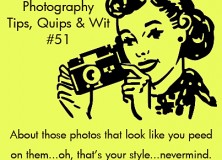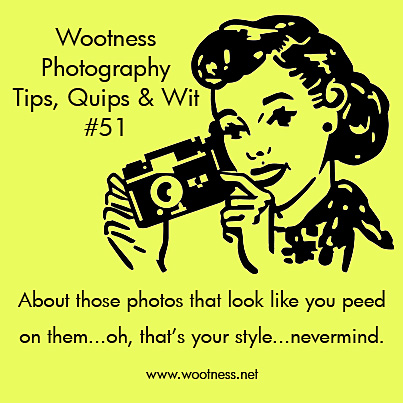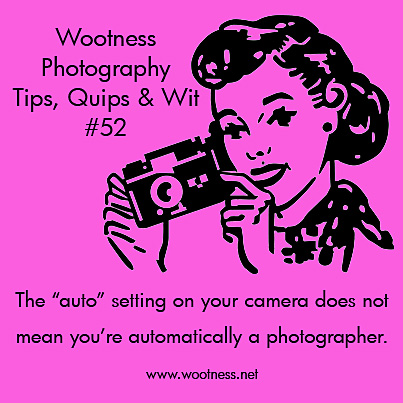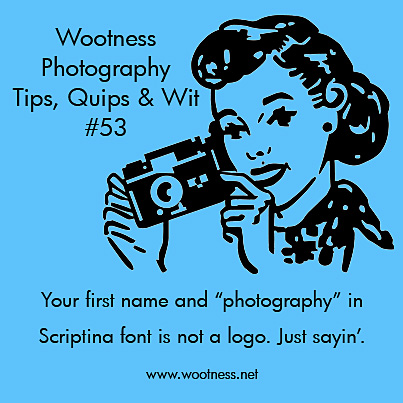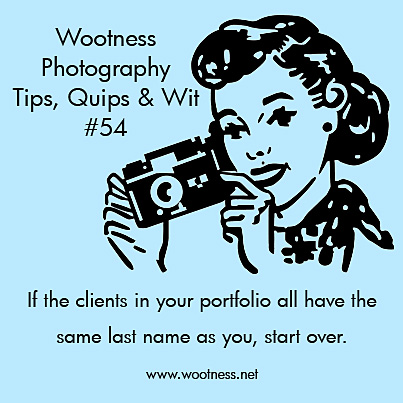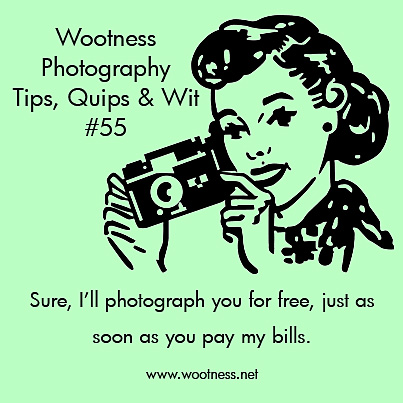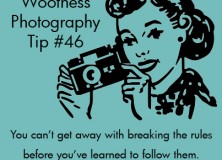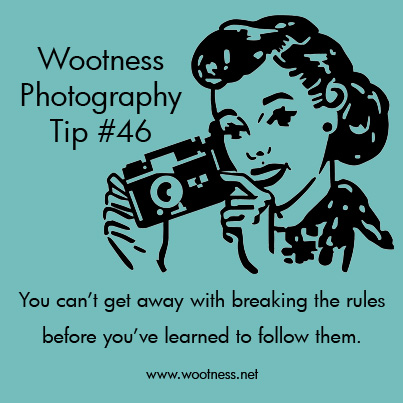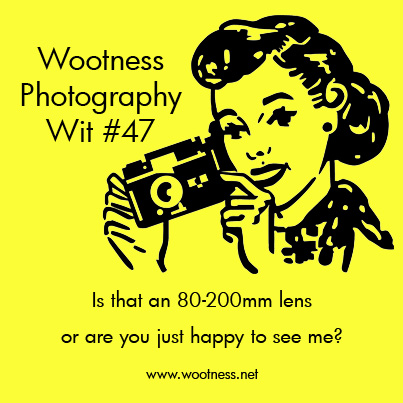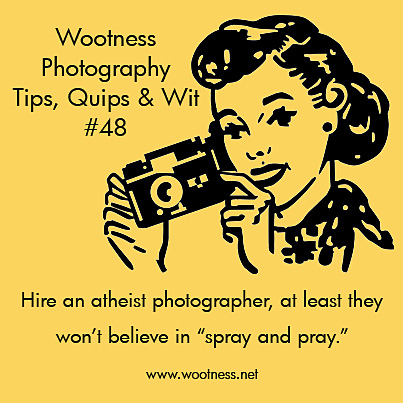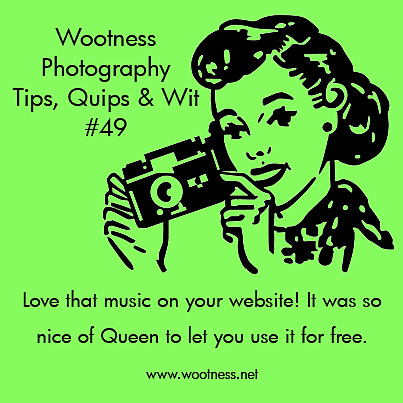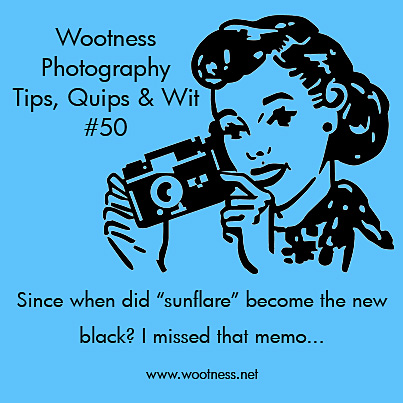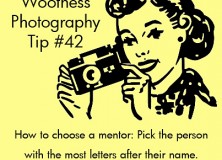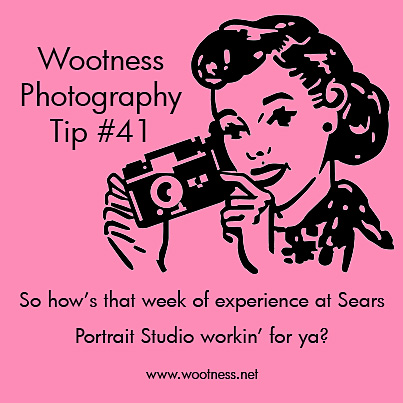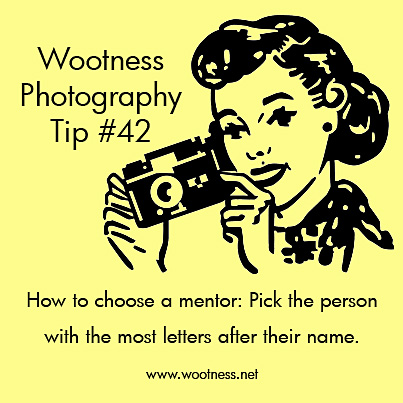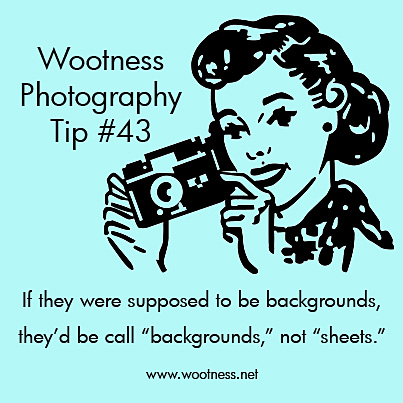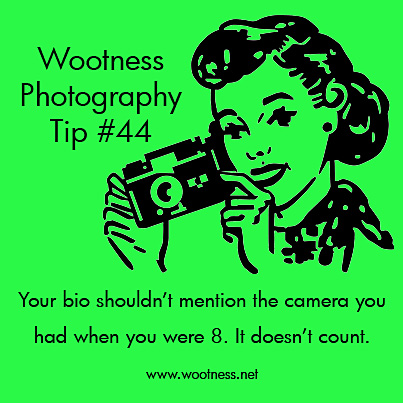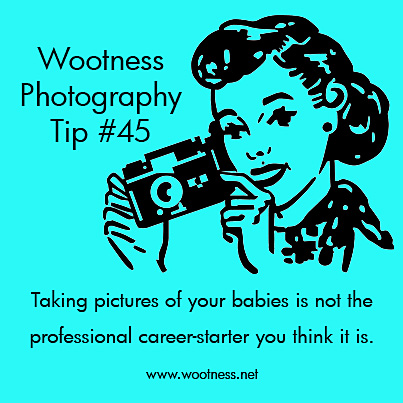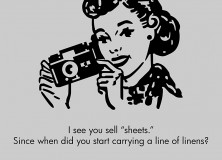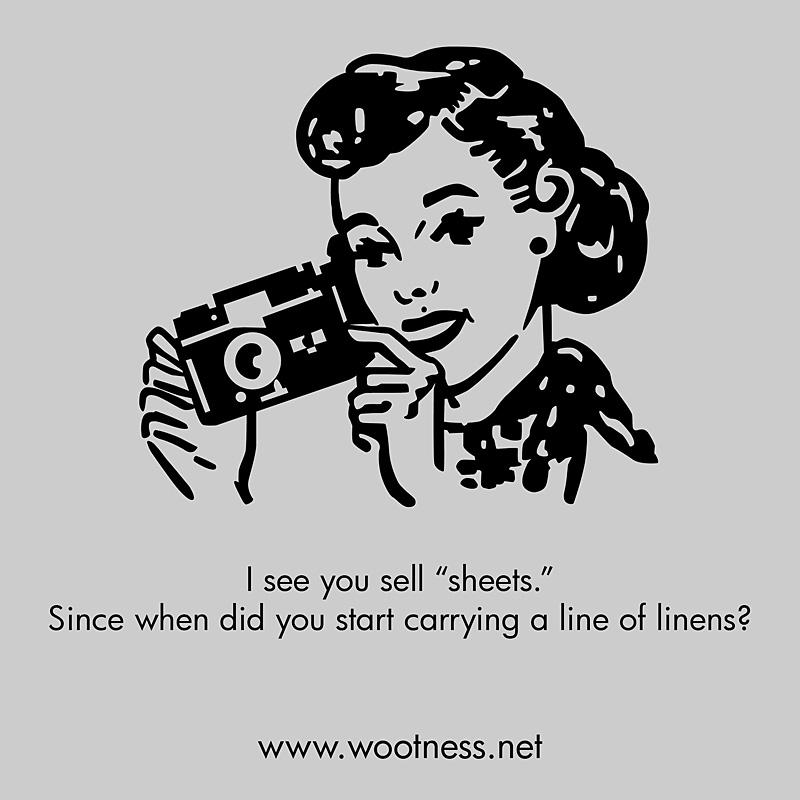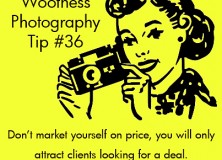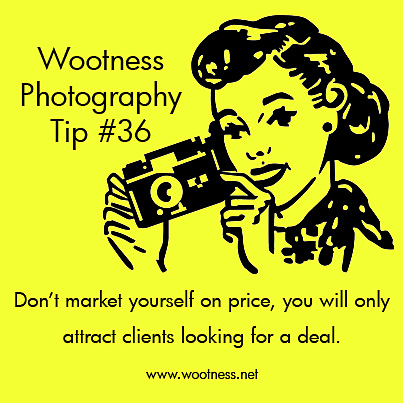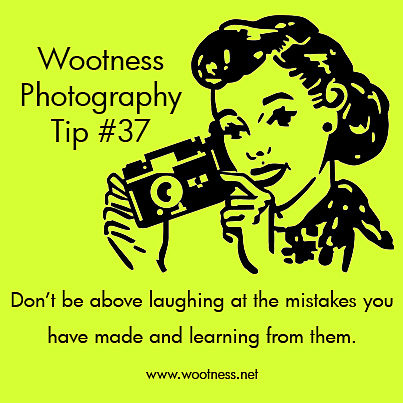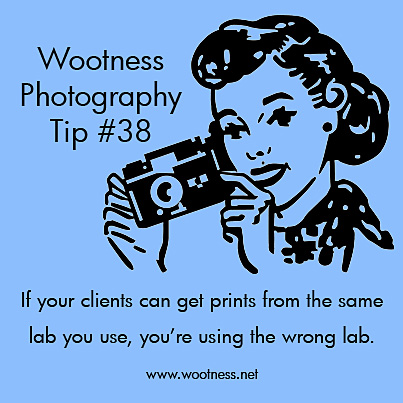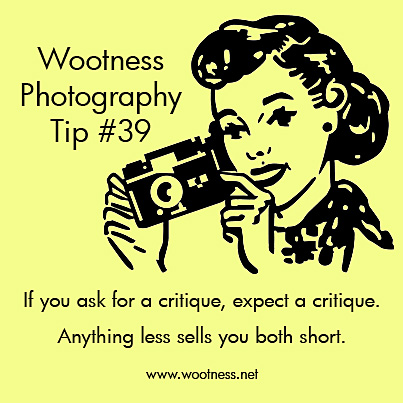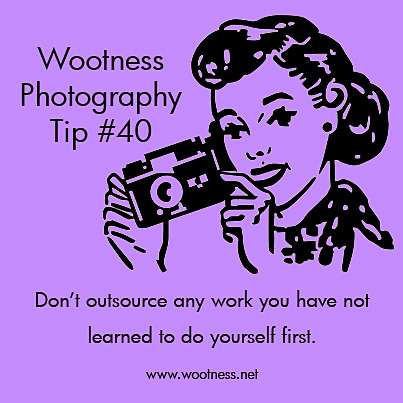So, let’s jump back to the cartoon and explain the concept behind it:
Yes, you can stock your studio with non-photography lights – but it’s so much HARDER and it’s difficult to find people that do it that way that have enough experience with it to help you learn. It’s all about trial and error with bulbs that can’t be adjusted. I like really gently wrap-around lighting, which comes from putting a HUGE soft box almost on top of my client. If I used shop lights, the light would not be adjustable and would probably be too bright that close, plus it would be super-hot for the client – plus the color balance would be off, not to mention I’d have to figure out a way to mount a soft-box to a shop light – I’d have a Mickey-Moused setup at best.. It’s just a handful of awkward circumstances. I’m not saying it can’t be done – but you’re not doing yourself or your work any favors by sticking with them. You will love photographic lights and your work will improve by leaps and bounds.
I know they’re expensive, but start with one light. Just one. And a soft box and a light stand. You will need a trigger for the light, so you will need to get, at the very least, a sync cord or a wireless trigger like a Pocket Wizard. If you go with the wireless option, you will need 2 triggers, one for your camera and one for the light. I know Pocket Wizards are expensive, there are other options out there, included what are referred to as “cheap eBay Triggers” that can be had for under $25. It isn’t a sin to start with those – I did. I will warn you that they’re not terribly reliable and after too many shoots of the lights not going off consistently, I gave up and got Pocket Wizards. I was able to find a used set from someone going out of business. I think you can be comfortable buying these used, they’re workhorses and they’re so expensive to begin with that people take pretty good care of them.
I highly recommend Alien Bees as photographic lights and beginning with an 800ws strobe is probably your best bet and will be very handy. 400ws lights are available for less money, but I find they aren’t quite strong enough for a main light, so I use mine as a hair light or background light.
Don’t fret too much over the soft box, just get what you can afford. I recommend the folding Octabox from Alien Bees. I use this as my main light on location shoots because it folds down like an umbrella and is easy to store/transport. I use it as my fill light in the studio. For studio work, my main light modifier is a 4×6 Aurora. This is a monster, does not break down well, so transporting it is out of the question. It also requires a heavy duty light stand and a counterbalance weight or you’re going to have it toppling over on a regular basis.
For your soft box, you will need a back plate. This is a round metal ring that attaches the soft box to the light. So, if you buy a soft box to go on an Alien Bee, you will need the Alien Bee back plate for it.
While I’m on my Alien Bee kick – be aware that Paul Buff (the maker of Alien Bee) also has a higher quality line of lights. All of the soft boxes and modifiers they carry will fit their entire line of lighting equipment. Brilliant marketing, in my opinion! You can keep adding to and upgrading your equipment and all of the modifiers will still work with everything you have.
Buying studio lighting equipment is a scary, expensive move, but if you’re prudent with your money, and purchase good quality equipment a piece at a time, you’ll be on your way to a very useable lighting system that will last you a good while and will help your work be the best it can be.
Later on, after you have a handle on the whole lighting thing and can produce consistent results, go ahead and experiment with out-of-the-box lighting sources – it is fun and challenges your skills, just please wait, because if you try and start out this way, you are dealing yourself a hand of frustration.
